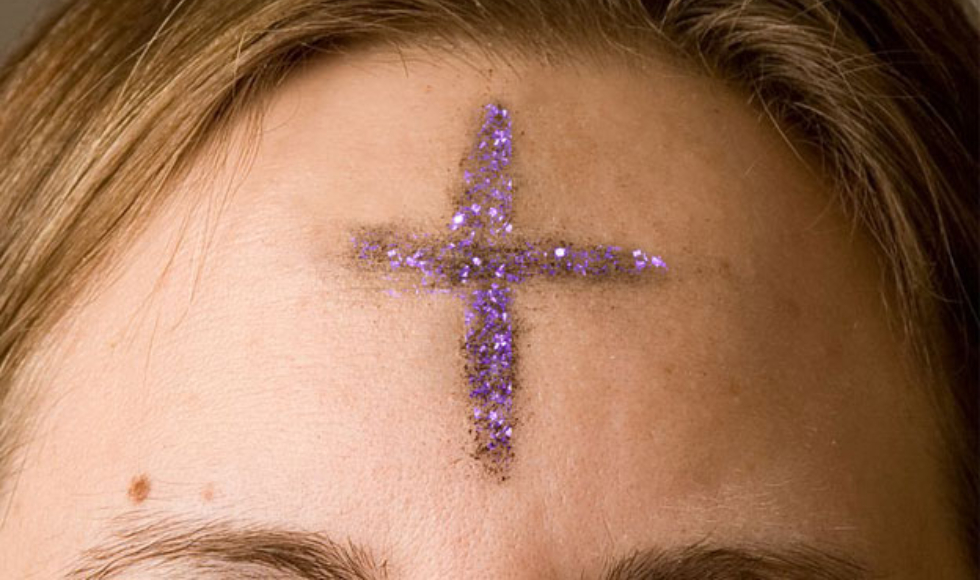‘Glitter Ash Wednesday’ a symbol of negotiation between sexuality, faith

What happens when you a take a centuries old religious ritual and add a bit of sparkle?
That’s a question many people including Whitney Ross, Religious Studies PhD candidate and sessional instructor will be pondering this March 1, when a New York-based advocacy group is asking “queer-positive Christians,” who favour LGBTQ equality, to show support by wearing “glitter ash” on their foreheads to mark Ash Wednesday.
Ash Wednesday is the start of a six-week season called Lent that leads to Easter. Traditionally, grey ashes, made from burned palm fronds that were used in the previous year’s Palm Sunday service, are blessed by a minister or priest and daubed on the foreheads of Christians to symbolize repentance – a ritual that dates back to the 11th Century.
Queer history week – Feb 27 to March 3
Thursday March 2 – Between Worlds: Religion, Culture, and LGBTQ Identity
BSB 117, 6:30 PM — 8:30 PM
Navigating the ways in which culture, religion, and sexual and gender diversity interact can be complicated and difficult. LGBTQ+ people of faith may often find that spaces catering to one aspect of who they are are otherwise hostile to their existence. Oftentimes cultural backgrounds are not receptive to sexual diversity, and many LBGTQ+ people of colour and religious people can feel isolated by the LGBTQ+ community or their cultural community.
Come to talk about religion and LGBTQ+ identity, and about how both LGBTQ+ communities and cultural and religious communities can be more inclusive to minorities within them.
This year a LGBTQ group in New York City called Parity is adapting the tradition by mixing professional makeup-grade purple glitter with the traditional ashes as an outward sign of queer Christianity.
Parity has sent the sparkling ash to any congregation or individual that requested it so that churches can make glitter ashes an option along with traditional ashes.
“Marking yourself with glitter – how powerful of a statement is that?” asks Ross, who lectures on queer Biblical feminists, sexual and gender identity, and marginalized groups. “People are taking this historical, traditional, ritual act and putting glitter in it – ‘queering’ it. It is a ritual that is evolving as a group takes it and makes it their own their own. It becomes an act of negotiation.
“Instead of queer Christians completely rejecting their religion or completely rejecting their sexuality you are starting to see a negotiation between religion and sexual identity that hopefully allows individuals to come to a place within themselves where they can affirm both aspects of their identity.”
Recent years have seen other religious rituals redefined, including for those who are transitioning genders. Some synagogues are exploring the use of the Mikvah, an ancient Jewish bath, and newly-written blessings for people who use the bath to celebrate at various stages in their gender transition.
“It makes sense that we see this negotiation of sexual identity and faith. A lot of what rituals are about is marking identity and transition. How we define ourselves with ritual can be very personal,” says Ross. “It’s important that as a community we have discussions about these kinds of issues. Nothing is more relevant in this day and age than marginalized communities. That individuals are starting to feel accepting of themselves and the idea of representation is very powerful.”


